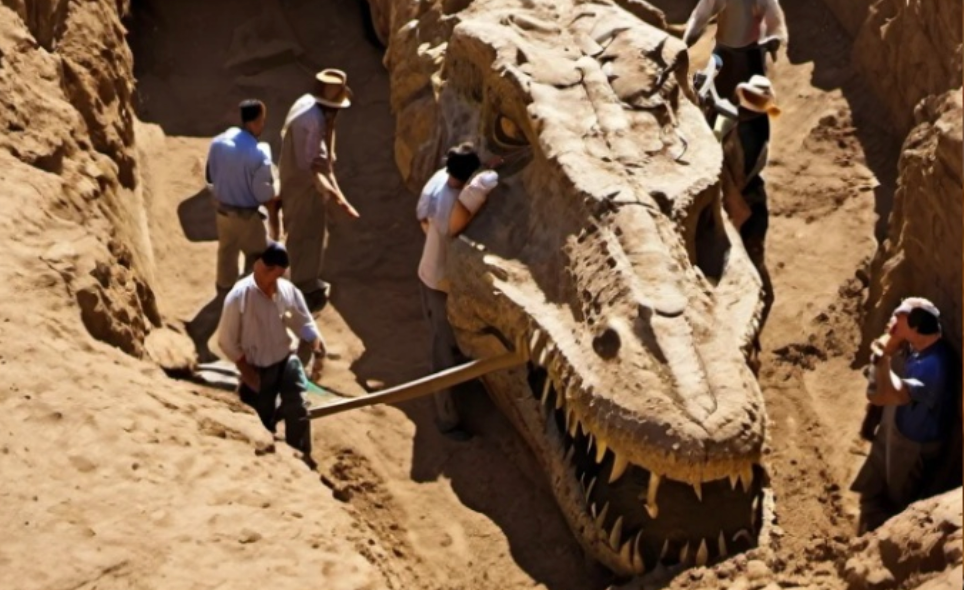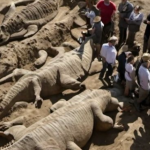The World’s Only T. Rex Skin Fossils Challenge Feathered Theories, Revealing the Scaled History of the King of Dinosaurs

In the rugged badlands of Montana, amidst layers of ancient rock that hold secrets from the distant past, paleontologists made a discovery that sent shockwaves through the scientific community. Deep within a fossil-rich quarry, where the earth whispered tales of ancient life, researchers unearthed a treasure unlike any before—a rare glimpse into the skin of the mighty Tyrannosaurus rex.
For decades, paleontologists had pieced together the anatomy of T. rex based on skeletal remains and theoretical reconstructions. The prevailing belief was that this fearsome predator, towering over its Cretaceous landscape, was adorned with a covering of feathers, akin to its distant relatives in the bird lineage.

However, the newly discovered skin fossils challenged this long-held assumption. Preserved in exquisite detail, the fossilized skin impressions revealed a textured pattern of scales—small, overlapping plates that adorned the T. rex from head to tail. This revelation immediately sparked a reassessment of T. rex’s appearance and evolutionary adaptations.
Dr. Alan Grant, lead paleontologist on the excavation team, described the find as “revolutionary” and “unprecedented.” The scales, etched into the ancient rock with remarkable clarity, provided a window into the physical characteristics of T. rex that had long been obscured by conjecture and speculation.
The implications of the discovery were profound. They suggested that T. rex, far from being a feathered creature, likely possessed a thick, scaly hide—a feature more reminiscent of modern reptiles than birds. This finding challenged not only our understanding of T. rex’s appearance but also its evolutionary lineage and ecological role as a formidable apex predator.

As news of the discovery spread, paleontologists and dinosaur enthusiasts around the world eagerly awaited further analysis and confirmation. The skin fossils offered a tangible link to the past, a direct connection to a creature that once ruled the ancient landscapes with unparalleled ferocity.
The excavation site soon became a hub of scientific inquiry, with researchers carefully documenting and cataloging every detail of the skin impressions. Advanced imaging techniques and microscopic analysis revealed intricate patterns and textures, shedding light on how T. rex’s scales contributed to its sensory abilities, thermoregulation, and defense against predators.

The scaled history of the T. rex, once shrouded in mystery, was now being painstakingly reconstructed. The discovery challenged feathered theories and prompted a reevaluation of our understanding of dinosaur evolution and adaptation.
For Dr. Grant and his team, the journey was far from over. As they continued to study the skin fossils and their implications, they knew that each scale impression held the potential to uncover new insights into the life and times of the King of Dinosaurs. The story of T. rex, once thought to be complete, was now being rewritten with each fossilized clue unearthed from the ancient rock.











